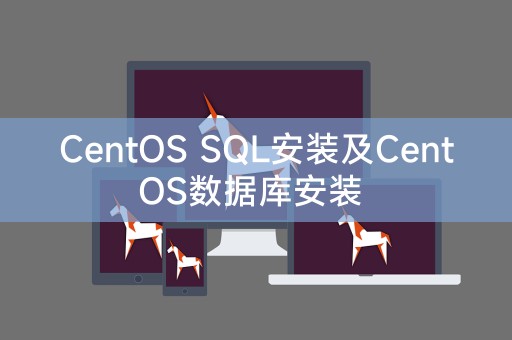Home >System Tutorial >LINUX >CentOS SQL installation and CentOS database installation
CentOS SQL installation and CentOS database installation
- 王林forward
- 2024-02-09 21:18:43571browse
php editor Youzi brings you a detailed guide on CentOS SQL installation and CentOS database installation. Installing SQL and database on CentOS operating system is one of the key steps to build and manage websites and applications. This article will introduce you to how to install SQL and common database software such as MySQL and PostgreSQL on CentOS. Whether you are a beginner or an experienced developer, this article will provide you with clear steps and practical tips to help you complete the installation process with ease. Let’s get started!

CentOS SQL installation
Installing SQL on CentOS usually requires installing SQL software packages first, such as MySQL, PostgreSQL, etc. The following is the installation on CentOS MySQL steps:
1. Open the terminal and log in to the system with root privileges.
2. Run the following command to update the system software package:
sudo yum update3. Install the MySQL software package:
sudo yum install mysql-server 4. During the installation process, you will be prompted whether to continue the installation. Enter "y" and press the Enter key.
5. After the installation is complete, start the MySQL service:
sudo systemctl start mysqld6. Set the MySQL service to start automatically at boot:
sudo systemctl enable mysqld7. Check the MySQL service status:
sudo systemctl status mysqld8. If the service status is active, MySQL has been installed successfully.
CentOS database installation
After installing SQL, we can install various database management systems, such as phpMyAdmin, phpPgAdmin, etc. The following are the steps to install phpMyAdmin on CentOS:
2. Run the following command to install the phpMyAdmin software package:
sudo yum install epel-releasesudo yum install phpmyadmin3. After the installation is complete, edit the phpMyAdmin configuration file:
sudo vi /etc/httpd/conf.d/phpMyAdmin.conf4. Find the line "Require ip 127.0.0.1" and change it to "Require all granted", save and quit.
5. Restart the Apache service:
sudo systemctl restart httpd6. Open the browser and visit "" to enter the phpMyAdmin login interface.
Through the above steps, we can successfully install SQL and the corresponding database management system on CentOS. These tools can help us manage and operate the database, providing powerful functions and convenient interfaces. If you are using the process If you encounter any problems, you can refer to the official documentation or consult relevant technical support.
LINUX little knowledge sharing
In LINUX, use the "chmod" command to modify the permissions of a file or directory. The permissions are divided into read (r), write (w) and execute (x) There are three types, corresponding to numbers 4, 2 and 1 respectively. You can use these numbers to set the permissions of files or directories through the "chmod" command. Use the following command to set the permissions of a file to read-only:
chmod 444 filenameThis way other users can only read the file and cannot modify or delete it. Understanding and mastering the "chmod" command can better manage and protect your files and directories.
The above is the detailed content of CentOS SQL installation and CentOS database installation. For more information, please follow other related articles on the PHP Chinese website!

